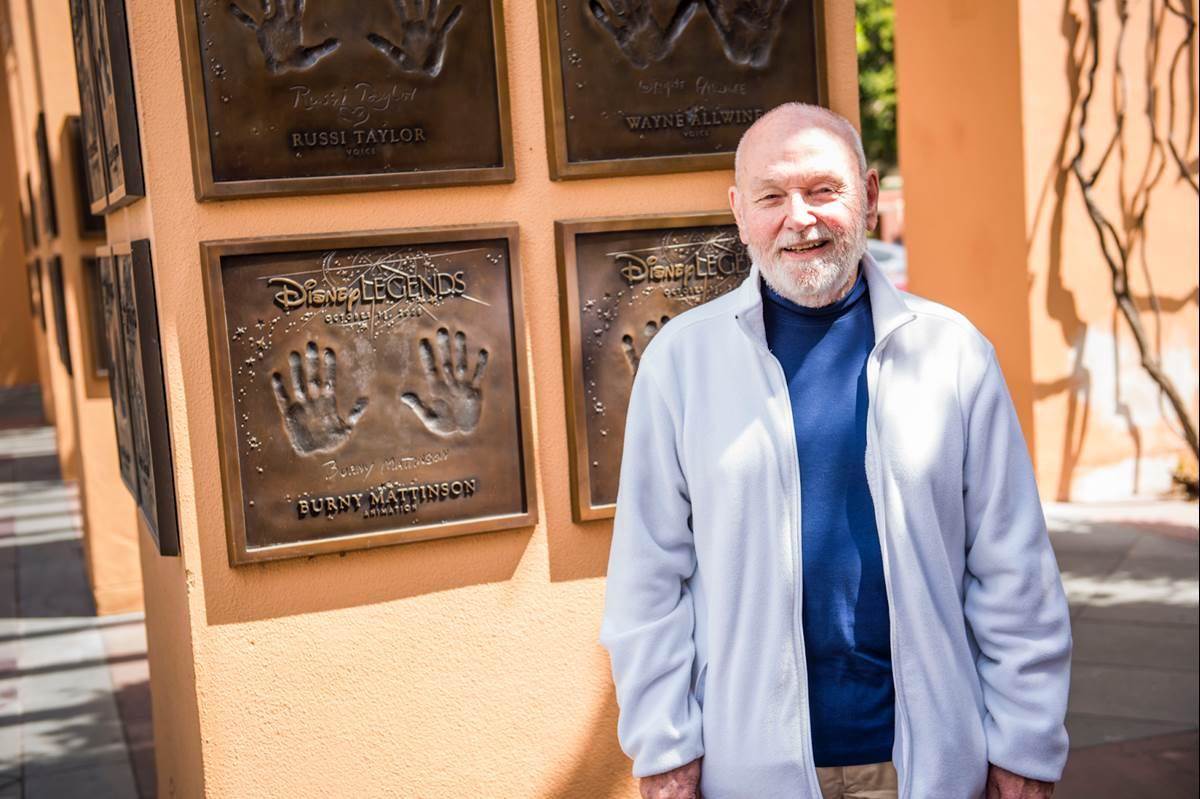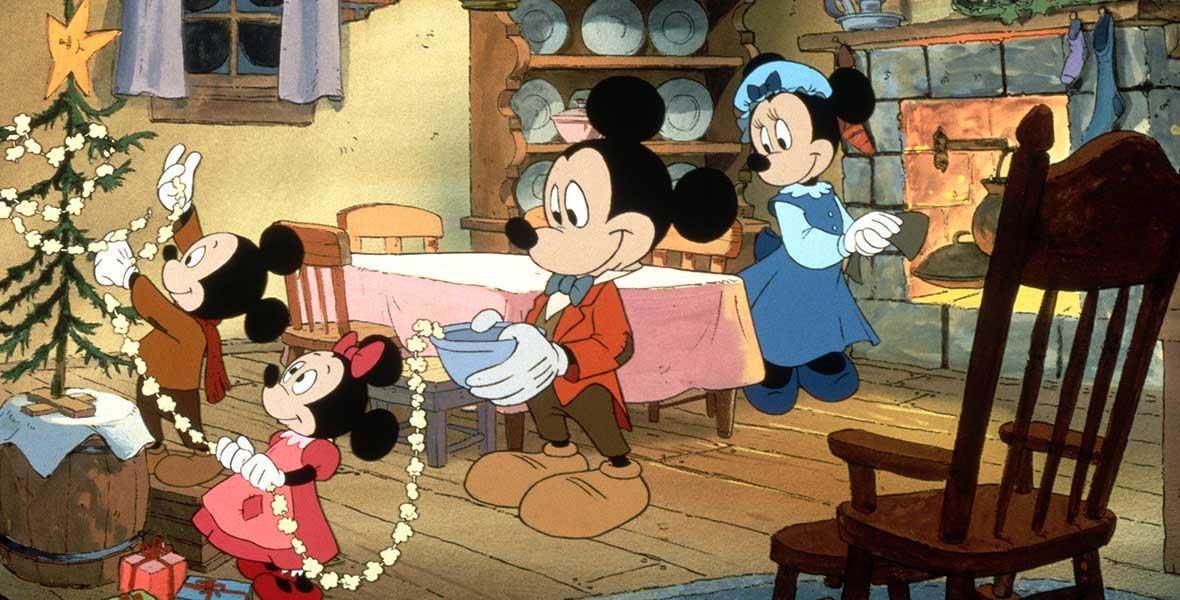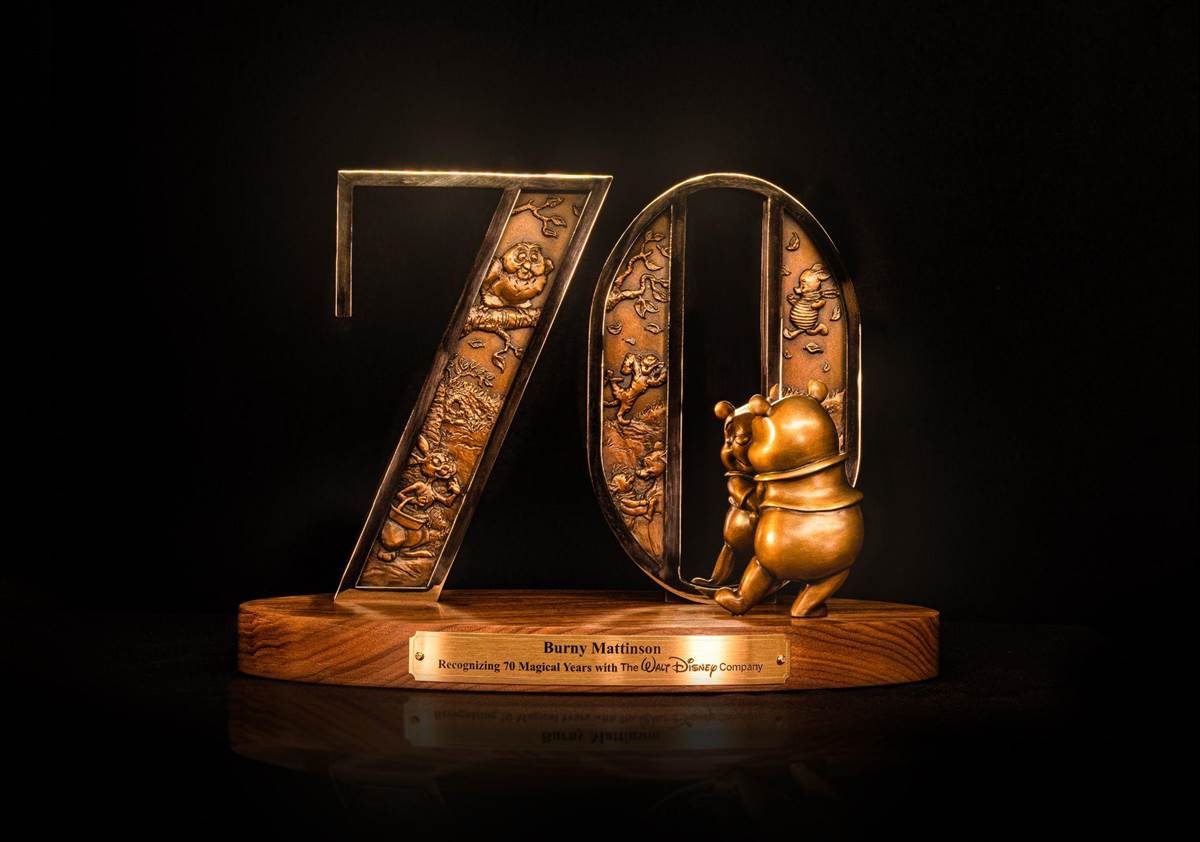On what would have been his 70th anniversary with The Walt Disney Company, friends, colleagues, and fans of Burny Mattinson gathered to celebrate his legacy. While most Disney Animation fans are familiar with the Nine Old Men and the creative forces of the Disney Renaissance, Burny was a member of the “inbetween” generation that sometimes gets lost when retelling Disney’s long animation history. However he provided a bridge that still has an impact on the animators of today.
As the story goes, when it was time for Burny to get a job, his mother told him that since he liked to draw, he should go to Disney and apply. When he approached the studio, security let him know that you can’t just walk-in and try and get a job. But upon a review of his portfolio, the security guard was impressed and rang-up the personnel department and told them that they should check out his stuff. While there were no jobs open in animation, Burny was hired to be a traffic boy for the mailroom.
Burny eventually became an inbetweener, then an animator, and eventually a story artist. His storyboards were revered. In fact, as part of the presentation, Eric Goldberg showed how Burny’s boards for Fox and the Hound were better than what was in the final film. During the Disney renaissance his boards were so complete that so many of his choices ended up in the final film. That shot where Beast points to the door after Belle rejects him for dinner… That was Burny.
When he was struggling connecting to The Black Cauldron, Burny pitched his idea of a featuette inspired by a Disneyland Records story called Mickey’s Christmas Carol directly to Ron Miller. When it was greenlit, he brought on other animators that didn’t fit with The Black Cauldron and provided a training ground for the animators that would eventually revitalize Disney Animation. Burny even had a more direct role in “saving” animation at Disney when after a disastrous first pitch, he put together a story reel which impressed Disney’s new leadership enough to allow the film to move forward. While many may consider The Little Mermaid the start of the Disney renaissance, The Great Mouse Detective is often cited as Disney Animation’s true return to form.
While Burny’s story work continued for decades, including an important role in 2011’s Winnie-the-Pooh, his lasting legacy has been how he inspired the current artists at Disney. Many would discuss how nervous they were to meet Burny or ask him to sign some piece of memorabilia, but he was always delighted to honor their requests. “Breakfast with Burny” mentorship sessions became a staple where he would share his insight into the story process and stories from the studio’s past. Those that knew him described him as the personification of Winnie-the-Pooh who often wore shorts, maintained a positive outlook, and had an infectious laugh.
Burny had a role in designing his Service Award for what would have been his 70th anniversary with The Walt Disney Company. Fittingly, it features Winnie-the-Pooh looking through the mirror as an animator might, with his friends from the 100 Acre Wood adorning the digits. While this statue is an honor to the longest service Disney employee in history, his true monument will be in the hearts of those at Disney Animation. Disney Animation’s Jennifer Lee said you can still hear his name in the hallways of Disney Animation as the artists recall advice and lessons they have learned from him, whether it be about animation or life itself. For Burny, the studios was his family and his family will remember him forever. As Burny once said, “Disney has always been a family place. I think that’s what’s so rich about it. It’s family. And, you know, that was the big thing Walt felt, way back. He was family.”



